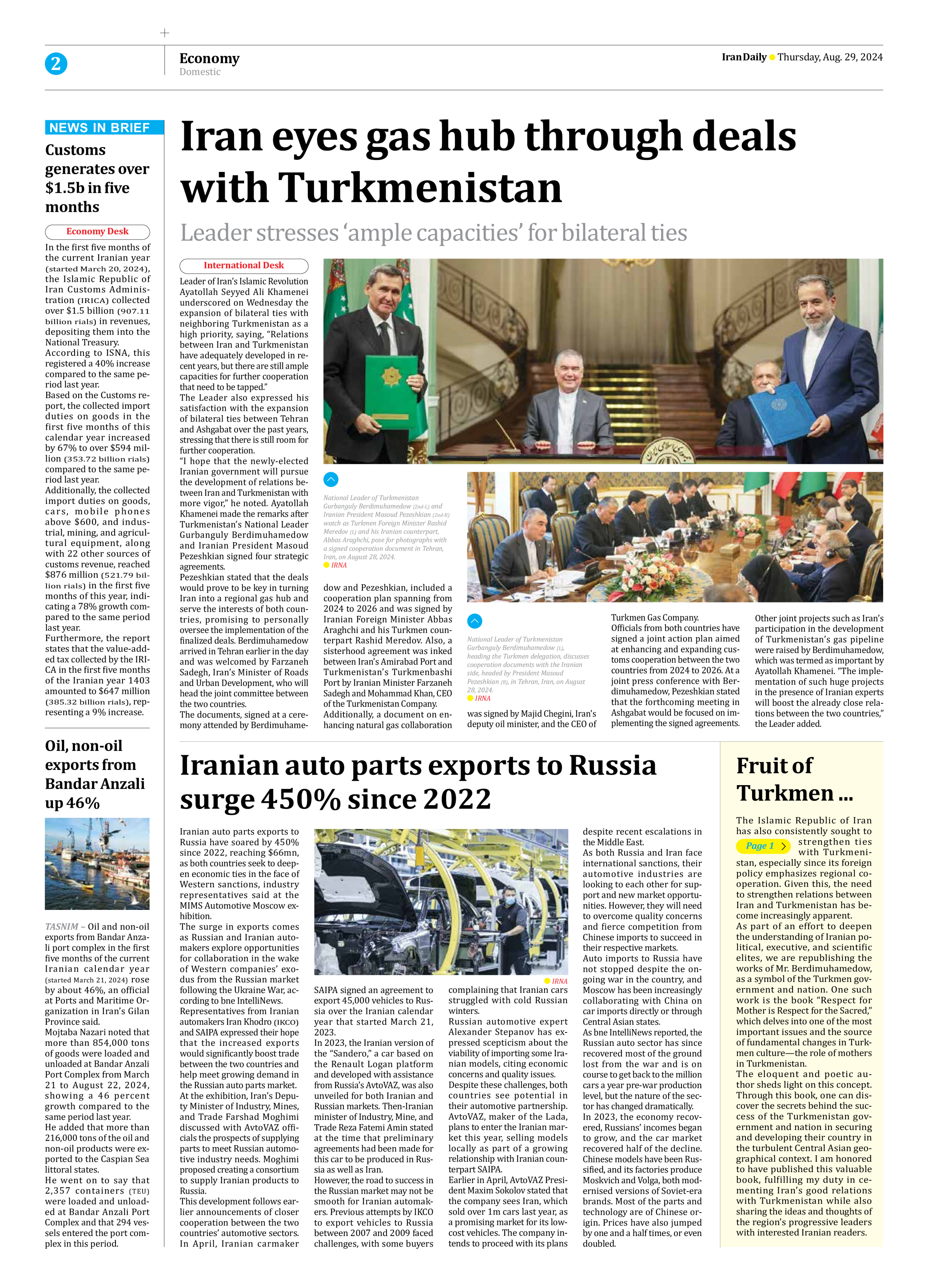
Copy in clipboard...
Iranian auto parts exports to Russia surge 450% since 2022
The surge in exports comes as Russian and Iranian automakers explore opportunities for collaboration in the wake of Western companies’ exodus from the Russian market following the Ukraine War, according to bne IntelliNews.
Representatives from Iranian automakers Iran Khodro (IKCO) and SAIPA expressed their hope that the increased exports would significantly boost trade between the two countries and help meet growing demand in the Russian auto parts market.
At the exhibition, Iran’s Deputy Minister of Industry, Mines, and Trade Farshad Moghimi discussed with AvtoVAZ officials the prospects of supplying parts to meet Russian automotive industry needs. Moghimi proposed creating a consortium to supply Iranian products to Russia.
This development follows earlier announcements of closer cooperation between the two countries’ automotive sectors. In April, Iranian carmaker SAIPA signed an agreement to export 45,000 vehicles to Russia over the Iranian calendar year that started March 21, 2023.
In 2023, the Iranian version of the “Sandero,” a car based on the Renault Logan platform and developed with assistance from Russia’s AvtoVAZ, was also unveiled for both Iranian and Russian markets. Then-Iranian minister of Industry, Mine, and Trade Reza Fatemi Amin stated at the time that preliminary agreements had been made for this car to be produced in Russia as well as Iran.
However, the road to success in the Russian market may not be smooth for Iranian automakers. Previous attempts by IKCO to export vehicles to Russia between 2007 and 2009 faced challenges, with some buyers complaining that Iranian cars struggled with cold Russian winters.
Russian automotive expert Alexander Stepanov has expressed scepticism about the viability of importing some Iranian models, citing economic concerns and quality issues.
Despite these challenges, both countries see potential in their automotive partnership. AvtoVAZ, maker of the Lada, plans to enter the Iranian market this year, selling models locally as part of a growing relationship with Iranian counterpart SAIPA.
Earlier in April, AvtoVAZ President Maxim Sokolov stated that the company sees Iran, which sold over 1m cars last year, as a promising market for its low-cost vehicles. The company intends to proceed with its plans despite recent escalations in the Middle East.
As both Russia and Iran face international sanctions, their automotive industries are looking to each other for support and new market opportunities. However, they will need to overcome quality concerns and fierce competition from Chinese imports to succeed in their respective markets.
Auto imports to Russia have not stopped despite the ongoing war in the country, and Moscow has been increasingly collaborating with China on car imports directly or through Central Asian states.
As bne IntelliNews reported, the Russian auto sector has since recovered most of the ground lost from the war and is on course to get back to the million cars a year pre-war production level, but the nature of the sector has changed dramatically.
In 2023, the economy recovered, Russians’ incomes began to grow, and the car market recovered half of the decline. Chinese models have been Russified, and its factories produce Moskvich and Volga, both modernised versions of Soviet-era brands. Most of the parts and technology are of Chinese origin. Prices have also jumped by one and a half times, or even doubled.







